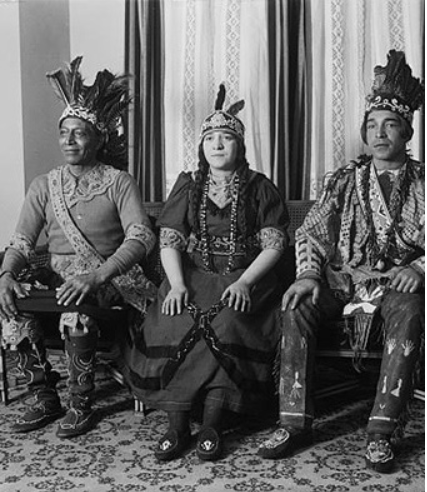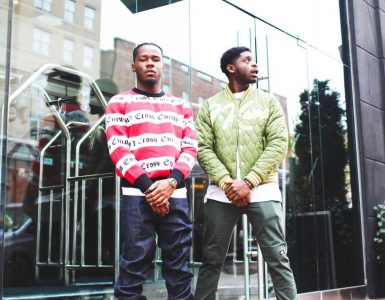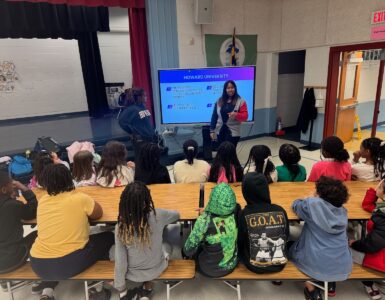November is Native American Heritage Month and this year’s theme is “weaving together our past, present, and future.”
The Indian Affairs Bureau said the theme reflects on failed policies of the past, such as federal Native American boarding schools, while also moving toward the present by highlighting ongoing efforts to address intergenerational trauma.
The District has several resources on Indigenous American history and culture, allowing for many opportunities to celebrate and learn more about Native American heritage.
Who were DC’s original inhabitants?
Washington, D.C. Native Americans (Courtesy/ Library of Congress)
The DMV region was home to the Nacotchtank tribe, who were known as the Anacostans. According to the DC Public Library, the Nacotchtank lived and worked in villages throughout the city.
The converging Anacostia and Potomac rivers were a trading hub for Native tribes across the eastern seaboard and it provided the Anacostans with food, water and irrigation for farming.
When European settlers entered the area, diseases, violence and land left led to the death and displacement of most Native people in the area. Within 40 years of European contact, only a quarter of the tribe remained.
Many remaining members joined or assimilated into other tribes. There are no living members of the Nacotchtank tribe today.
Where can I learn more about Indigenous heritage?
- National Museum of the American Indian, 4th St SW, Washington, DC 20560
Museum of the American Indian (Courtesy/ Smithsonian)
One of the largest resources of Native American history and culture is the National Museum of the American Indian (NMAI). They are hosting several events in celebration of Native American Heritage Month:
NMAI is hosting its annual Native cinema showcase online through Nov. 29. This year’s series explores challenges confronting Indigenous communities: missing and murdered Indigenous women, sports, intergenerational trauma and rematriation with the land of the Buffalo. Films are available to stream here.
Honoring Zitkala-Ša with Hoop Dancer Starr Chief Eagle
Held. Nov. 29, with performances starting at 11:30 am, 12:30 pm, 2 pm and 3 pm.
Zitkala-Ša, a member of the Yankton Dakota Sioux tribe, will be honored as part of the United States Mint’s American Women Quarters Program.
Zitkala-Ša in 1898. (Courtesy/ Wikimedia Commons)
She was a writer, composer, educator, and advocate for Native American rights. Her political activism led to the passage of the Indian Citizenship Act of 1924, which declared that all Native Americans born in the United States were U.S. citizens.
Starr Chief Eagle, a member of the Sicangu Lakota Sioux tribe, will honor Zitkala-Ša in a hoop dancing performance.
Dec. 8, 10 am-5:30 pm, in the museum atrium
Visitors will have the opportunity to meet Native artists and learn about their traditional arts.
Artists will be selling traditional and contemporary art, including beadwork, jewelry, paintings, photography, pottery, and sculpture.
- DC Public Library
West End Library Monthly Movie Series
DC Library is showcasing indigenous films as part of its monthly movie series at West End Library.
The last film of the month will be screened on Tuesday, Nov. 26 at 5:30 pm. The films are also available to screen on Kanopy through the end of the month.
- Library of Congress
The Library of Congress has an extensive online resource guide to Indigenous communities throughout the Americas, including photographs, law archives, musical traditions, story maps and video recordings.
- National Art Gallery
The National Gallery of Art is a good resource for archives of Native American art, both past and present. Although they do not have any special exhibits for Native American Heritage Month this year, they have a large collection of written and video narratives documenting the works and experiences of Indigenous artists.
“Adios Map” by Jaune Quick-to-See Smith (Courtesy/ Smithsonian)
It is also worth looking at last year’s exhibition, “The Land Carries Our Ancestors: Contemporary Art by Native Americans.” The gallery’s website provides an audio guide to each piece that was in the exhibition.
- Guide to Indigenous DC
Guide to Indigenous DC is a walking tour that highlights sites important to Indigenous history and culture throughout the District.
It explores Native Americans’ contributions to the area, highlights federal tribal policy developed in DC, and talks about the city’s original inhabitants.










Recent Comments